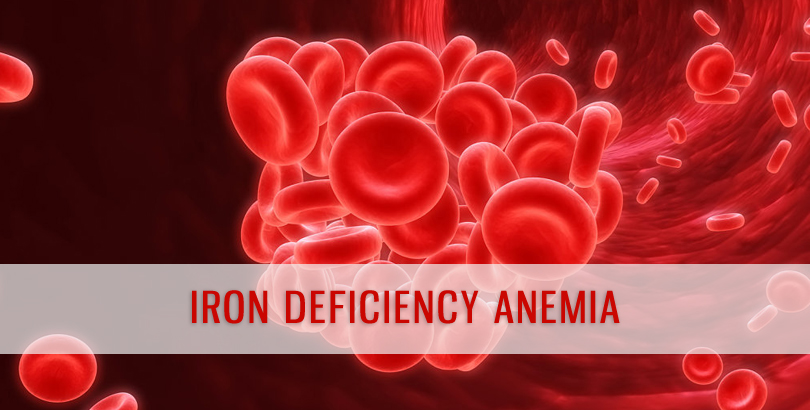Polycystic Ovarian Syndrome (PCOS) is development of multiple cysts on ovaries, due to defective metabolism of estrogen and androgens. The basic defect is in the chief endocrine control axis known as Hypothalamo Pituitary Ovarian Axis.
The ovaries are made up of almost a million primordial follicles, of which after menarche, some mature to form ova. In PCOS, multiple follicles enlarge simultaneously, leading to failure of ovulation.
Causes Of PCOS
PCOS has multifactorial causes including stress, sedentary lifestyle, faulty dietary habits, drugs which cause hormonal imbalance, environmental factors and genetic factors.
Signs And Symptoms:
* Menstrual abnormalities: As a result of prolonged anovulatory cycles, there are menstrual abnormalities like irregular menses, menorrhagia (heavy bleeding), oligomenorrhea (scanty bleeding) , dysfunctional uterine bleeding and infertility.
* Androgen excess related symptoms: excess facial hair, abnormal body hair such as around nipples, lower abdomen, male pattern growth of pubic hair etc. In very severe cases, deepening of voice, muscular development etc are seen but this is rare.
* Obesity and Metabolic syndrome: Over 50% patients of PCOS have a BMI in the range of obesity.
- Women with PCOS should be assessed for their cardiovascular risk by evaluating their BMI, fasting lipid and lipoprotein levels, and risk factors for metabolic syndrome. There is almost 40-45% prevalence of Metabolic syndrome in patients of PCOS.
- In women, metabolic syndrome is characterized by abdominal obesity (waist circumference >35 in), dyslipidemia (triglyceride level >150 mg/dL, high-density lipoprotein cholesterol [HDL-C] level < 50 mg/dL), elevated blood pressure, a proinflammatory state characterized by an elevated C-reactive protein level, and a prothrombotic state (increased tendency to clotting)
- The prevalence of Coronary calcification and atherosclerosis is found higher amongst PCOS patients.
*Infertility: Most women with PCOS ovulate intermittently, and hence take longer than normal to conceive. A subset of PCOS patients have infertility and need assisted reproduction.
*Insulin Resistance and Diabetes:
- Approximately 10% of women with PCOS have type 2 diabetes mellitus, and 30-40% of women with PCOS have impaired glucose tolerance by 40 years of age.
- Clinically signs of Insulin resistance like Acanthosis Nigricans (hyper pigmentation of intertriginous areas like armpits,groin etc) are seen.
*Obstructive Sleep Apnea (OSA)
- Many women with PCOS have obstructive sleep apnea syndrome (OSAS), which is an independent risk factor for cardiovascular disease.
- Patients complain of excessive daytime somnolence and individuals with obstructive sleep apnea experience apnea/hypopnea (cessation of breathing/decreased breathing) episodes during sleep.
Diagnosis
* Ultrasound: A pelvic ultrasound can easily pick enlarged ovaries or polycystic ovaries. It is the commonest and widely available diagnostic modality.
*Hormonal assays:
- Serum FSH and LH levels
- Serum testosterone levels
- Serum Prolactin levels
- Serum Cortisol levels
- Serum TSH and free Thyroxine levels
* Serum glucose and fasting insulin levels for insulin resistance, impaired glucose tolerance and type 2 Diabetes Mellitus
*Lipid profile and Serum HS-CRP levels for metabolic syndrome and risk of cardiovascular disease.
Management of PCOS:
*Lifestyle changes, such as diet and exercise, are considered first-line treatment for women with polycystic ovarian syndrome (PCOS).
*Pharmacologic treatments are reserved for so-called metabolic derangements, such as anovulation, hirsutism, and menstrual irregularities.
* Medications for such conditions include oral contraceptives, metformin, prednisone, leuprolide, clomiphene, and spironolactone.
* Lifestyle modifications such as weight loss and increased exercise in conjunction with a change in diet consistently reduce the risk of diabetes.
- This approach has been found to be comparable to or better than treatment with medication and should therefore be considered first-line treatment in managing women with polycystic ovarian syndrome (PCOS).
- These modifications have been effective in restoring ovulatory cycles and achieving pregnancy in obese women with PCOS. Weight loss in obese women with PCOS also improves hyperandrogenic features.
- Patients with polycystic ovarian syndrome (PCOS) who have impaired glucose tolerance should start a comprehensive program of diet and exercise to reduce their risk of developing diabetes mellitus. Moderate physical activity, provided the patient has no contraindications is encouraged.
- Smoking is discouraged because of the increased risk of cardiovascular disease.
- In addition, obese women with PCOS can benefit from a low-calorie diet for weight reduction.
- A diet patterned after the type 2 diabetes diet has been recommended for PCOS patients.This diet emphasizes increased fiber; decreased refined carbohydrates, trans fats, and saturated fats; and increased omega-3 and omega-9 fatty acids.
*Surgical treatment:
- Surgical management of polycystic ovarian syndrome (PCOS) is aimed mainly at restoring ovulation.
- Various laparoscopic methods, including electrocautery, laser drilling, and multiple biopsy, have been used with the goal of creating focal areas of damage in the ovarian cortex and stroma.
*Medical treatment: Medical treatment is given based on complications including drugs like oral hypoglycemics, oral contraceptives, oestrogen receptor modifying agents, ovulation inducers etc.


















